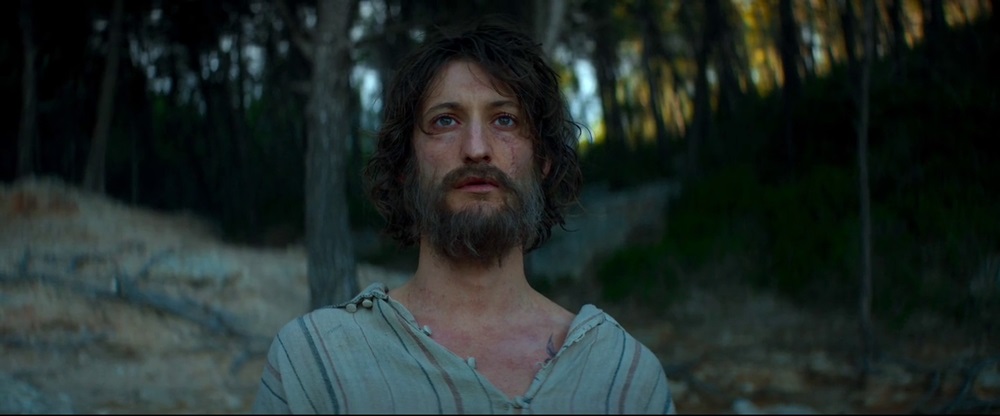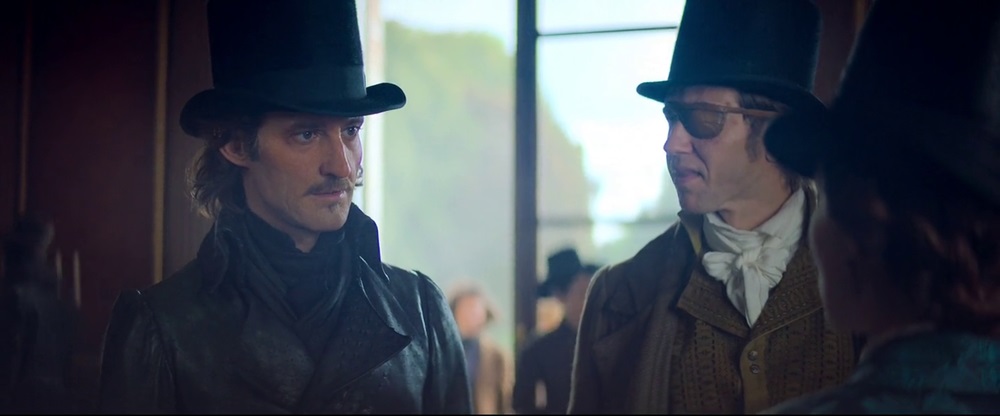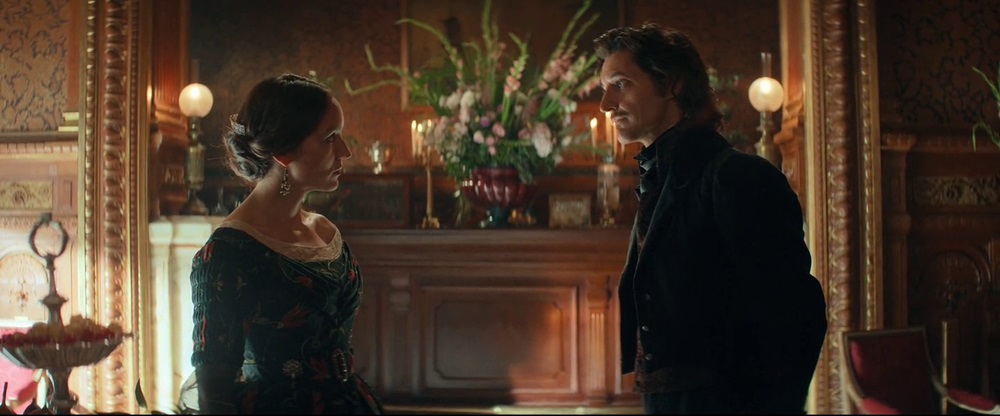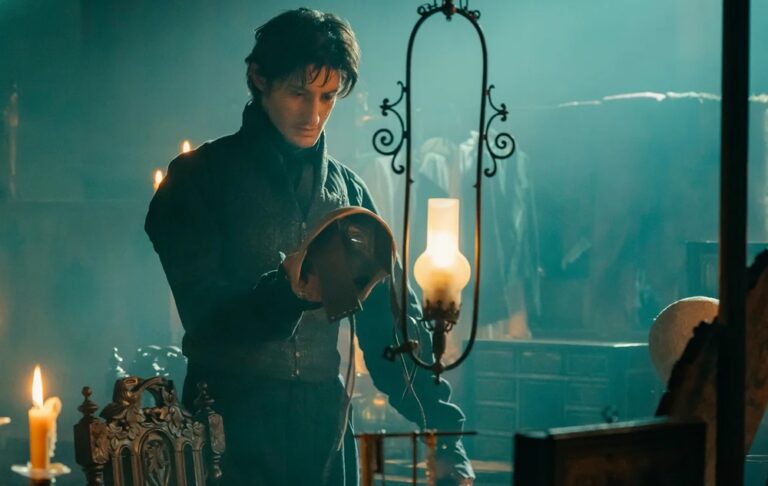Given the story’s weight, scope, and deep emotional layers, I approached “The Count of Monte Cristo” (French: Le Comte de Monte-Cristo), the 2024 French reinterpretation by Matthieu Delaporte and Alexandre de La Patellière, with excitement tinged with apprehension. Could this version capture the novel’s essence, especially given how deeply it has resonated with me over the years? As it turns out, this new rendition, despite a few notable shortcomings, brings a grand yet nuanced approach. The result, apart from being the most expensive French film of 2024, is among the better adaptations of Dumas’ timeless tale.
More QCinema Coverage: ‘All We Imagine as Light’ Meditating on the Persistence—Despite the Impermanence—of ‘Home’
A Story of Betrayal and Revenge
Right from the outset, it’s clear that this take on “The Count of Monte Cristo” is both reverent and innovative in its treatment of Dumas’ work. The film opens in 1815, during Napoleon’s exile, with Edmond Dantès (Pierre Niney) defying his captain’s orders to rescue a woman adrift at sea. This woman, Angèle (Adèle Simphal), has in her possession a letter from the exiled emperor himself, and later on thanks Dantès for saving her life.
Now the newly appointed captain of the ship and betrothed to his fiancée Mercédès (Anaïs Demoustier), Dantès is on top of the world. However, on the day of his wedding, police storm the church and arrest him, accusing him of being a Bonapartist. With his former captain Danglars (Patrick Mille) testifying against him, Dantès seeks the deputy prosecutor’s help in clearing his name from the false accusation. However, that prosecutor, Gérard de Villefort (Laurent Lafitte), sees to it instead that the young man is taken away for good.
After fourteen years in the isolated prison of Château d’If, Edmond escapes in a daring bid for freedom. Now wealthier than he ever dreamed, he assumes the persona of the Count of Monte Cristo and exacts revenge on the men who betrayed him.

Streamlined Yet Faithful Approach to Dumas’ Tale
Pathé Films, the studio behind this adaptation, previously succeeded with a two-part “The Three Musketeers,” showing they could modernize Dumas for contemporary audiences while respecting his source material. Here, they continue that tradition by making careful alterations that amplify the interpersonal drama between characters like Fernand de Morcerf, Danglars, and Villefort, whose motives become more pointed and less arbitrary.
For example, the opening scene where Dantès defies Danglars’ orders and saves Angèle reveals the latter’s secret ties to the Bonapartist cause. This deviation from the novel streamlines the stage set for Dantès wrongful imprisonment. The narrative change, while significant, is a fresh way to tighten the story’s political intrigue and introduce more intimate betrayals.
Another instance involves the backstory of Morcerf (Bastien Bouillon). Aside from his jealousy toward Dantès, in this version both Edmond and his father Louis (Bernard Blancan) are members of the Morcerf family’s household. This servitude is a narrative touch that allows Morcerf to build on his need to protect family status—an element that adds believability to his desire to betray Dantès.
In all the changes they made, Delaporte and de La Patellière compressed Dumas’ expansive text into a streamlined, energetic film, shifting certain dynamics while retaining the core spirit of the story. While not flawless, the film balances complexity with accessibility and succeeds in making the story feel immediate and urgent.
Pierre Niney’s Dantès: A Haunting Transformation
Niney’s casting as Edmond Dantès is one of the film’s greatest strengths. The actor brings a mixture of innocence and haunting resolve that traces Dantès’ transformation from an idealistic young sailor to a hardened, calculating figure consumed by revenge. His expressive eyes, which convey both the vulnerability of Dantès’ youth and the vengeful resolve of his later years, make him an ideal fit for the role. Niney’s ability to embody Edmond’s inner conflict allows the audience to understand the toll his desire for retribution takes on him, even as he pursues it with relentless focus. His transformation feels both authentic and deeply tragic.
This rendition of Dantès takes on shades of a Batman-like antihero, with allusions to his masked, larger-than-life persona that make him a symbol of vengeance and retribution. However, as Niney portrays it, Dantès is far from a purely dark figure. Despite his calculated moves against those who wronged him, he remains at his core a man haunted by his past, a complexity that Niney navigates beautifully. His interactions with Mercédès, in particular, showcase the conflicted heart beneath his steely exterior, allowing a brief yet powerful glimpse of the man he might have been, had he not been so profoundly wronged.

Supporting Performances that Elevate the Drama
While Niney’s Dantès anchors the film, the supporting cast gives the story additional richness. Demoustier’s portrayal of Mercédès is a highlight, bringing an understated, powerful depth to the role. Her character could have easily fallen into a romantic stereotype, yet Demoustier avoids this by portraying Mercédès’ undying, conflicted love for Dantès as something nuanced and layered. Her performance captures the essence of a woman who, though now married to Morcerf, has never fully let go of her love for Dantès—a love she compartmentalizes as her own form of penance for moving on.
This dynamic, more so than in previous adaptations, brings a haunting sense of what could have been, making their encounters in Paris especially poignant. The filmmakers’ decision to leave their love story unresolved, without introducing another romantic interest for either character, is a welcome choice, reinforcing the tragic cost of Edmond’s vengeance.
On the other hand, Anamaria Vartolomei as Haydée brings an ethereal, expressive presence reminiscent of a young Greta Scacchi. Her performance as Ali Pasha’s daughter offers a compelling blend of strength and fragility that enriches her role within Dantès’ scheme. Vartolomei’s portrayal emphasizes Haydée’s moral complexity and the pain she shares with Dantès, lending credibility to her eventual alliance with him. Her interactions with Andréa (Julien de Saint Jean) and Albert (Vassili Schneider) reveal both her compassion and her simmering anger toward those who wronged her family, all without relying on overt sentimentality.
In this version of “The Count of Monte Cristo,” the filmmakers wisely avoid making Haydée Dantès’ romantic partner, instead establishing her as a respected ally whose loyalty stems from shared pain and mutual understanding. Personally, given the film’s themes and how the directors executed them, I believe this was the soundest choice.
A Lavish Production Featuring Gorgeous Camerawork and a Multilayered Score
One of the film’s most remarkable achievements is its visual storytelling. The cinematography by Nicolas Bolduc captures the contrasts that define Dantès’ journey: the grim, claustrophobic environment of Château d’If, juxtaposed with the opulence of Parisian high society. This dynamic use of light and shadow intensifies the story’s themes of deception, ambition, and revenge, with each setting underscoring a stage in Dantès’ transformation. The high production values are unmistakable, as each scene feels meticulously crafted, from the eerie solitude of Dantès’ imprisonment to the grandeur of his later life as the Count.
Moreover, the film score courtesy of Jérôme Rebotier deserves special mention. Grandiose yet intimate, the soundtrack accompanies Dantès’ journey with a sense of urgency that oscillates between haunting melancholy and heart-pounding tension. This nuanced score underscores both the romanticism and danger of Dantès’ story, elevating it beyond mere melodrama to something deeply resonant and compelling.

How the Film Finds and Loses Its Rhythm Through Pacing
Despite its three-hour runtime, the pacing of “The Count of Monte Cristo” remains brisk. This, frankly speaking, is a double-edged sword. The choice to move quickly through the first act, particularly Dantès’ imprisonment in Château d’If, leads to an uneven emotional foundation. In Dumas’ novel, and even in the earlier versions, the time Dantès spends in prison with Abbé Faria profoundly shapes his character, imbuing him with both intellect and purpose.
This version, however, glosses over this formative relationship, reducing Abbé Faria (played by Pierfrancesco Favino) to a near cameo. The underuse of Favino—a gifted actor capable of conveying depth and wisdom—robs the narrative of a crucial transformation phase, making Dantès’ later strategic brilliance feel less earned.
This compressed pacing affects more than just Dantès’ character arc. By rushing through his early suffering, the film weakens the moral complexity of Dantès’ revenge. As the Count, Dantès gradually realizes that his vendetta is unraveling, harming those he once cared for. Yet without a thorough exploration of his pain and growth, audiences may find it harder to sympathize with his need for revenge, especially when it begins to spiral out of his control. A particularly stirring scene with Haydée hints at this moral reckoning, yet the weight of the moment is somewhat dulled by the story’s earlier staccato pacing and narrative omissions.

‘The Count of Monte Cristo’: A Modern Twist on Timeless Themes
Delaporte and de La Patellière’s vision reimagines “The Count of Monte Cristo” as a contemporary parable, examining issues of wealth, power, and social facades that resonate with today’s audience. Themes like the disparity between outward appearance and inner truth—very much a “social media” concern—are woven into the narrative, though sometimes only lightly. The directors’ approach echoes Christopher Nolan’s The Dark Knight Trilogy, particularly “Batman Begins,” portraying Dantès as a complex antihero whose identity is shaped by pain, loss, and a relentless desire for justice. This parallel brings a fresh dimension to Dantès as a “masked” figure, though it occasionally leans a little heavily on the superhero trope without the same level of character introspection Nolan provided for Bruce Wayne.
Ultimately, this is a handsomely produced, well-acted, and thoughtfully directed retelling. It makes some bold choices, both narratively and visually, to tell a story that’s undeniably entertaining and engaging, even if it doesn’t fully capture the novel’s emotional depth. For fans of Dumas, the film offers a contemporary interpretation that remains largely faithful, yet newcomers may find some of its emotional beats and motivations opaque.
For all its ambition, “The Count of Monte Cristo” ultimately sacrifices some depth in favor of modern stylization and pacing. As someone who holds Dumas’ work close, I found this version refreshing and inventive, even as I wished it had taken more time to immerse viewers in Dantès’ inner life. Yet, the film remains a satisfying experience and a worthy addition to the legacy of Monte Cristo adaptations—a powerful study of Dumas’ timeless story of justice, revenge, and redemption.

“The Count of Monte Cristo” screened in this year’s QCinema International Film Festival under its Screen International section. The festival runs from November 8 to 17, 2024. Follow us for more coverage.



2 Comments
Monte Cristo is my favorite novel. So far no prior film even scratches the surface. This film does not get to my city until January. I’ve seen the trailer and read a few reviews. I understand your concern that the Chateau D’If segment is too compressed. All I can say is choices have to be made to fit 117 chapters into 3 hours. I’m pleased you still found the film favorable I have learned that sometimes we have to appreciate a production for what it is rather than what we want it to be.
Thank you for your comment. Hope you enjoy the film once it comes out to your city!